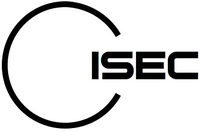 ISEC is very pleased to announce that Robert “Skip” Penny has joined its Board of Directors effective immediately. A brief bio:
ISEC is very pleased to announce that Robert “Skip” Penny has joined its Board of Directors effective immediately. A brief bio:
Robert E. “Skip” Penny, Jr. graduated from the US Air Force Academy in 1970 with a Bachlor of Science degree. Over his 20 year Air Force career, he held a breadth of command and staff positions in NORAD/ADCOM, Air Force Space Command, US Space Command, and Air Force Technical Applications Center retiring as a Lieutenant Colonel.
Upon retirement in 1990, he joined Motorola on the Iridium satellite program. As a System Engineer, he initially provided operations input to the early Iridium system design including authorship of the Iridium System Operations Concept and the Control Segment Operations Concept. He was a key contributor to initial release and multiple updates to A level specifications and segment interface control documents. He generated multiple Iridium Technical Notes on operations related functions including a probability of collision assessment with recommendations for debris mitigation.
In 2000, he went to work for General Dynamics as Senior System Engineer. He was Network and Communications Integrated Product Team Lead for General Dynamics-Lockheed Martin GPS III System Engineering and Integration Team. He was responsible for system and segment level requirements and resulting design of GPS III’s network of ground and space nodes including crosslinks.
Skip has a Master of Science degree from the US Air Force Institute of Technology. His Masters thesis was a computer simulation that predicted the probability of collision for the US Space Shuttle using a methodology that has since been adopted by AIAA, and many space operators. He also has a Master of Arts in Procurement Management from Webster College.
Skip has a long-time interest in the Space Elevator and was a co-author, along with Peter and Cathy Swan of the just released ISEC Report on Space Elevator Survivability – Space Debris Mitigation.
Skip’s initial focus with ISEC is going to be on designing a plausible Operations Scenario for a Space Elevator system. To date, this has not been done and it is the crucial first step to satisfy one of our goals for 2011, coming up with a cost of Operations for a Space Elevator. There have been several estimates generated for the cost of BUILDING a Space Elevator but none, to my knowledge, for MAINTAINING and OPERATING a Space Elevator system. These costs will, over time, almost certainly far exceed the initial construction costs.
 No justification exists (again, to my knowledge) for the oft-repeated statement that shipping cargo to space will be cheaper via a Space Elevator than via rockets. I think we all feel that this is almost certainly true, but no one is going to build one unless they can have a handle on the actual costs. And no one can estimate how much such a system costs unless they can first have a plausible, detailed scenario on how such a system might be run. There are literally hundreds of questions which must be answered and now we have someone on board who has the interest and skills necessary to answer these questions.
No justification exists (again, to my knowledge) for the oft-repeated statement that shipping cargo to space will be cheaper via a Space Elevator than via rockets. I think we all feel that this is almost certainly true, but no one is going to build one unless they can have a handle on the actual costs. And no one can estimate how much such a system costs unless they can first have a plausible, detailed scenario on how such a system might be run. There are literally hundreds of questions which must be answered and now we have someone on board who has the interest and skills necessary to answer these questions.
More will be posted soon on how Skip plans to go about this; which scenario he is going to adopt, what tools he is going to use to generate costs, how he can make it a collaborative effort, etc.
In the meantime, we’re very excited to have him on our Board of Directors. Welcome Skip – we’re very glad you’re here!
(Skip is pictured here at last year’s Space Elevator Conference, held at the Microsoft Conference Center in Redmond, Washington. Click on the picture thumbnail to see a full-size version of the picture).

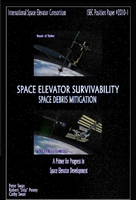
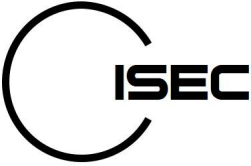 In 2010, ISEC announced the Yuri Artsutanov & Jerome Pearson prizes, prizes established to foster research into Space Elevator related topics. There were no winners in 2010, though we had two papers that qualified for Honorable Mentions in the Artsutanov Prize.
In 2010, ISEC announced the Yuri Artsutanov & Jerome Pearson prizes, prizes established to foster research into Space Elevator related topics. There were no winners in 2010, though we had two papers that qualified for Honorable Mentions in the Artsutanov Prize.

 The window is now officially open for articles for the very first ISEC Journal.
The window is now officially open for articles for the very first ISEC Journal.

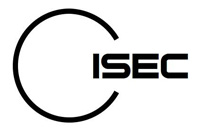 One of the many ISEC projects we’ve been working on this year is coming up with an “official position paper” on the subject of this year’s theme; Space Elevator Survivability – Space Debris Mitigation.
One of the many ISEC projects we’ve been working on this year is coming up with an “official position paper” on the subject of this year’s theme; Space Elevator Survivability – Space Debris Mitigation.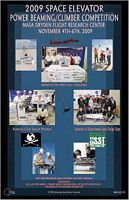
 In 2007, he published an article in the Loyola Law and Technology Annual addressing the international and federal legal environment that should be considered before the Space Elevator can become a reality. This article was titled International and Domestic Legal Issues Facing Space Elevator Deployment and Operation (7 Loy. L. & Tech. Ann. 71 (2007)).
In 2007, he published an article in the Loyola Law and Technology Annual addressing the international and federal legal environment that should be considered before the Space Elevator can become a reality. This article was titled International and Domestic Legal Issues Facing Space Elevator Deployment and Operation (7 Loy. L. & Tech. Ann. 71 (2007)).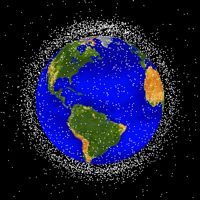
 After a long hiatus, it’s time to start posting Blog updates again. We at ISEC have agreed upon our Strategic Plan for 2010 and I will be posting about our projects for this year in the next several days.
After a long hiatus, it’s time to start posting Blog updates again. We at ISEC have agreed upon our Strategic Plan for 2010 and I will be posting about our projects for this year in the next several days. We had several very constructive conversations about how to jointly move forward the international effort to build a Space Elevator. This goal is the reason why the International Space Elevator Consortium (ISEC) was founded and I think it is fair to say that the ideas we had and agreements the three of us made will significantly move this idea forward.
We had several very constructive conversations about how to jointly move forward the international effort to build a Space Elevator. This goal is the reason why the International Space Elevator Consortium (ISEC) was founded and I think it is fair to say that the ideas we had and agreements the three of us made will significantly move this idea forward. Over the next few weeks, we will finalize and formalize these agreements and then use them to jointly move forward. I think it will be exciting times for ISEC and the Space Elevator Community as a whole.
Over the next few weeks, we will finalize and formalize these agreements and then use them to jointly move forward. I think it will be exciting times for ISEC and the Space Elevator Community as a whole. In the many years since the concept of a Space Elevator has been popularized and advanced in Science Fiction, the number of people actively supporting this concept has not appreciably increased. In addition, the theoretical and practical boundaries on the strength of carbon nanotubes are beginning to point towards a material weaker than hoped for (but still strong enough to build a Space Elevator, albeit with reduced capacity). Given these facts, how do those of us in the Space Elevator community move this idea forward?
In the many years since the concept of a Space Elevator has been popularized and advanced in Science Fiction, the number of people actively supporting this concept has not appreciably increased. In addition, the theoretical and practical boundaries on the strength of carbon nanotubes are beginning to point towards a material weaker than hoped for (but still strong enough to build a Space Elevator, albeit with reduced capacity). Given these facts, how do those of us in the Space Elevator community move this idea forward?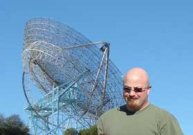 In the 4th installment of this series, Ed Gray, the head of ISEC’s Business Pillar, tells why he thinks everyone who wants to see a Space Elevator built should join
In the 4th installment of this series, Ed Gray, the head of ISEC’s Business Pillar, tells why he thinks everyone who wants to see a Space Elevator built should join 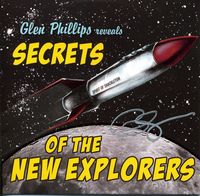 One other ISEC-related note; One of the benefits of joining as a “Standard” member is receiving an autographed copy of Glen Phillips CD, Secrets of the New Explorers. This CD has, IMHO, the best Space Elevator song written so far – and the rest of the album is pretty cool too. I
One other ISEC-related note; One of the benefits of joining as a “Standard” member is receiving an autographed copy of Glen Phillips CD, Secrets of the New Explorers. This CD has, IMHO, the best Space Elevator song written so far – and the rest of the album is pretty cool too. I  I am very pleased to announce that Jan Bilek, a long-time Space Elevator enthusiast, has volunteered to take on this task. Jan will be actively soliciting translations through his contacts and I’m confident that he will be able to move this project forward. The Space Elevator will benefit all humanity and I think it is only fitting that we who are actively promoting this idea be able to communicate at least the name of the concept in as many languages as possible.
I am very pleased to announce that Jan Bilek, a long-time Space Elevator enthusiast, has volunteered to take on this task. Jan will be actively soliciting translations through his contacts and I’m confident that he will be able to move this project forward. The Space Elevator will benefit all humanity and I think it is only fitting that we who are actively promoting this idea be able to communicate at least the name of the concept in as many languages as possible. Ben is the CEO of the
Ben is the CEO of the